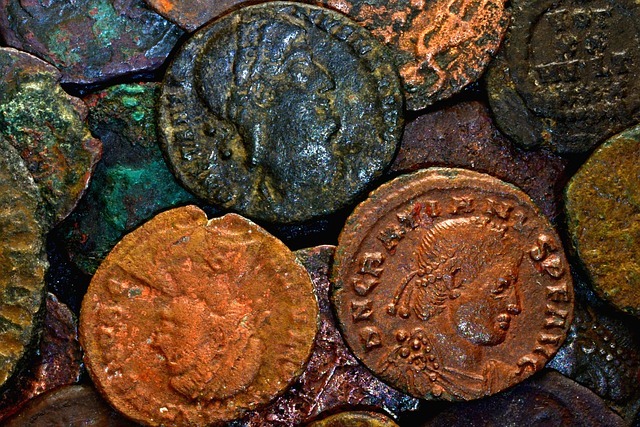The Bible Lands Museum Jerusalem
The Bible Lands Museum, Jerusalem, located opposite the Israel Museum at Rehov Granot 25 (P.O Box 4670, Jerusalem 91046; telephone 02 561 1066; facsimile 02 563 8228) is open Sun. Mon. Tues. Thurs. 09:30 to 17:30, Wed. 9:30 to 21:30, Fri. and holiday eves 09:30 to 14:00. Additionally the Museum is open many Saturday evenings for concerts in the auditorium, at which time the collection is also open for viewing. There are lecture series, in Hebrew or English, many Wednesday evenings, on topics of relevance to the scope of the Museum. Free parking is available just south of the Museum on a small road (right turn just past the entrance on a small road that winds down the hill to Rehov Burla. Entrance fees (other than Saturday evenings) are: adults ₪28, soldiers, students and new olim ₪15, pensioners ₪23 and groups of 10 or more, ₪22. An elevator for wheelchair access is located behind the registration desk. (Parking is available on the street that runs off R. Granot just past (southwest) the Museum.)
The public areas of the Museum are on 3 levels, a small street-level entrance hall with stairs that lead down to the intermediate level, where the collection is arrayed in 20 galleries. Also on this level are a small theater and gallery for temporary exhibitions. The lowest level contains more exhibit space, several classrooms, an auditorium and the cafeteria.
Facilities for visitors include toilets (behind the reception desk on the right side of the small entrance hall and on the lowest level to the side of the auditorium), a gift shop on the left side of the entrance hall, and a cafeteria just outside the auditorium that, depending on the day, offers drinks and snacks or hot meals.
Background
The museum was opened in 1992 to house the private collection of Dr. Elie Borowski, in his own words, a failed philologist, failed Talmudist, failed rabbi and failed professor who did not fail as an art dealer, but “made big, big, big, big money”. The land on Rehov Granot, opposite the Israel Museum was donated by the city of Jerusalem, but the $12 million cost of the building was born by Borowski himself.
The Collection
The artifacts, maps and illustrations are designed to provoke questions such as:
How were ancient societies structured, and what was daily life like?
What was the significance of daily religious worship?
How did trade and technology develop and influence lifestyles and beliefs?
How did new empires rise, and how did they eventually crumble?
How did different cultures express themselves through art?
How did people communicate and trade throughout the ancient world?
The collection was begun in the 1943 when Borowski, a soldier in a French army unit for Polish nationals escaped to Switzerland, where he was interned for the duration of the War. By then he had studied literature, philosophy and science at the University of Florence and had been a fellow in Assyriology at the Pontifical Biblical Institute where he learned to read cuneiform and its languages and post-Biblical Hebrew. In 1938 he transferred to Paris, to continue his studies at the Collège de France and the Louvre. Because Borowski was fluent in Polish, German, Italian, French and English (among the modern languages), served as an interpreter and janitor. When the tide of the war turned, he was transferred to the Château de Céligny, where the elite of the interred Polish officers were housed. He talked his Swiss “hosts” into allowing him half a day a week at the Museum of Art and History in Geneva and an acquaintance with a Swiss collector led him to a post-War career as a dealer in antiquities, headquartered first in Toronto, then in Basel. For some years his personal collection was housed, but only temporarily displayed, at the Royal Ontario Museum. His wife Batya was instrumental in convincing him to seek a permanent home for the collection in Jerusalem, and since his death, she continues to direct the Museum’s activities.
Before entering the galleries, there is a huge relief map of the lands from which the collection is drawn, from Egypt to Iran, from the Caucasus to the Sudan. The extents of the great empires of the period are outlined in lights, as are Abraham’s journeys from Ur to Haran and from Haran to Eretz Israel. Facing the map is a time table, showing the events in these lands over the temporal scope of the collection, from 7500 BE to 600 CE. The collection is arranged both thematically and geographically/historically in 20 galleries:
Gallery 1: From Hunter to Urban Dweller
Gallery 2: The Coming of Civilization
Gallery 3: Symbolic Communication
Gallery 4: Literate Voices, The Story of Writing
Gallery 5: The Pre-Patriarchal World
Gallery 6: The Sumerian Temple
Gallery 7: Old Kingdom Egypt
Gallery 8: Genesis 14, The Age of Warfare
Gallery 9: The Age of the Patriarchs
Gallery 10: When Israel Sojourned in Egypt
Gallery 11: The Sea Peoples
Gallery 12: Iranian Horsemen
Gallery 13: Stones of Aram
Gallery 14: Israel Among the Nations
Gallery 15: Assyria, the Rod of My Anger
Gallery 16: The Splendors of Persia
Gallery 17: Hellenistic Dominions
Gallery 18: Rome and Judea
Gallery 19: Roman and Coptic Egypt
Gallery 20: Sassanian Mesopotamia – Home of the Babylonian Talmud
This serves the purposes of many visitors, but not others. The amateur Biblical archaeology enthusiast will find it appropriate, especially with the help of the excellent Guide to the Collection (₪45), the extensive written material posted in each gallery or possible the audio-guide, which being overly ambitious in its coverage, is correspondingly non-selective. The archaeology professional may well find the organization of the collection to be confusing, as, ignoring geographic or historic boundaries, it sorts the collection into non-academic categories.
Extra Note
Since this report was compiled the museum has constantly been involved in adding new exhibits. Accordingly, it is advisable to check out their latest exhibitions and dates of any special programs to avoid disappointment. Some exhibits mentioned above may have been removed for special restoration, loaned out to other museums, etc.
Following our previous two studies about the visit to the Israel Antiquities Authority, we can better understand the process of an archaeological excavation project. We learnt about the need for undertaking careful and meticulous research, and gaining permission from the IAA to excavate an approved site in Israel. Imagine the immense excitement at not only making a discovery out in the field but also having it later displayed in such a prestigious museum where the general public can share in seeing the discovery? Careers in archaeology can begin at many diverse starting points from researching an historic document, stumbling across an hidden artifact in the field, to seeing a beautiful display in an institute such as Bible Lands. Furthermore, this occupation is not restricted to the young as many senior folk have also gained tremendous excitement from making their own remarkable discoveries!
Further episodes of this diary will be featured in later issues of the Jewish TV Channel through its Jewish Travel Channel.
Do you fancy taking a trip to Israel and maybe becoming a tour leader of your own group? The benefits are enormous and can include many free travel opportunities. A special course will be operated by qualified and experienced JTVC staff to enable you to learn more about such subjects as the history of Israel, its diverse people, its geological composition, and much more besides. Feel free to get in touch with us for further details.
CONTACT JTVC


